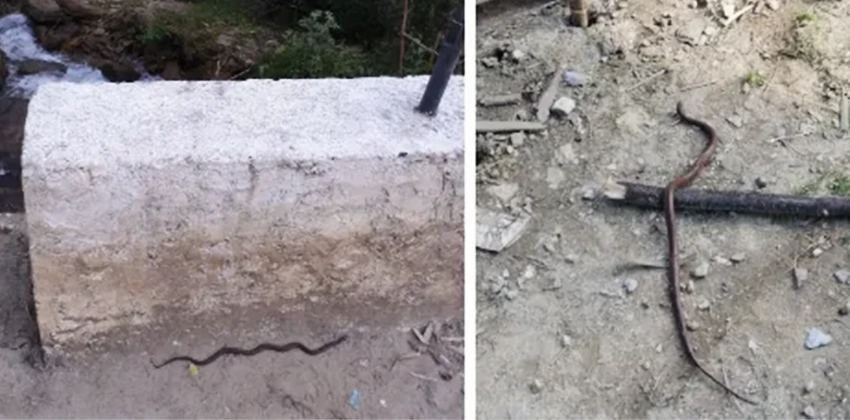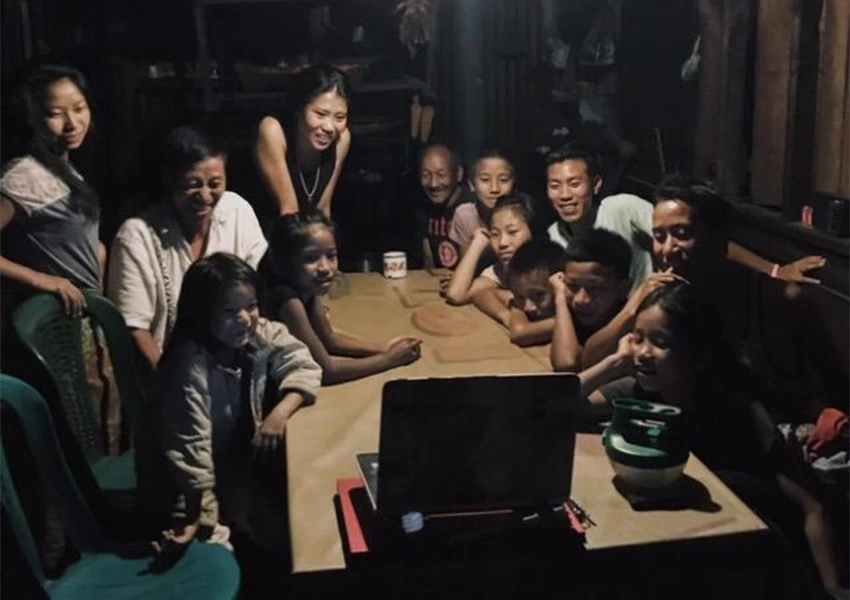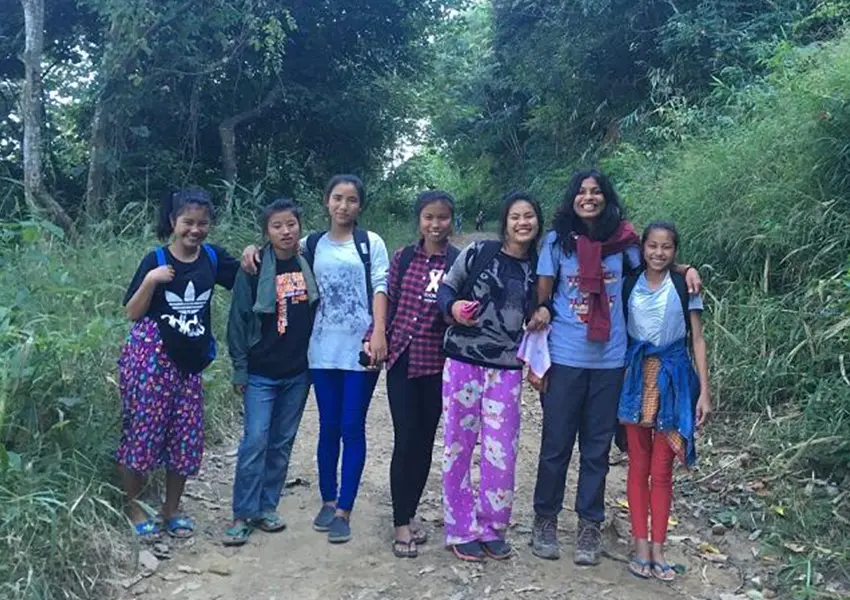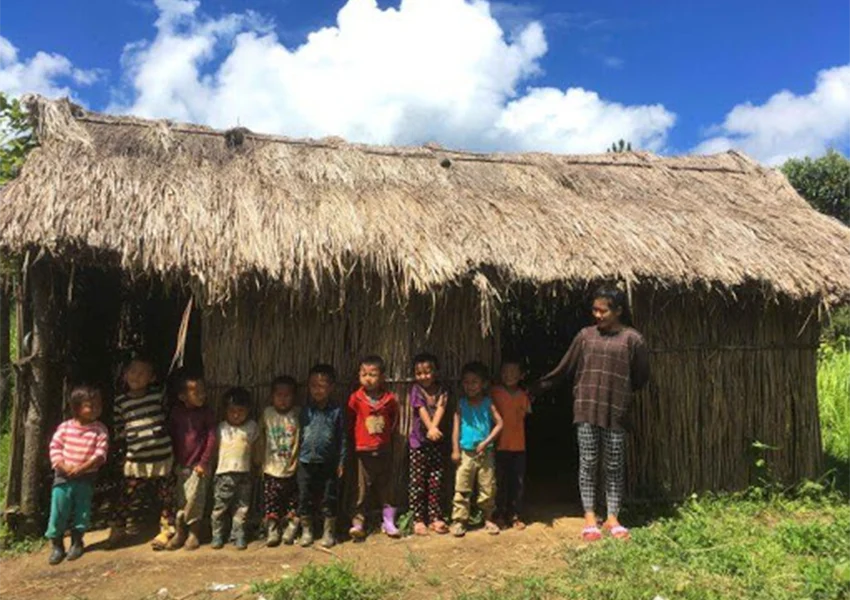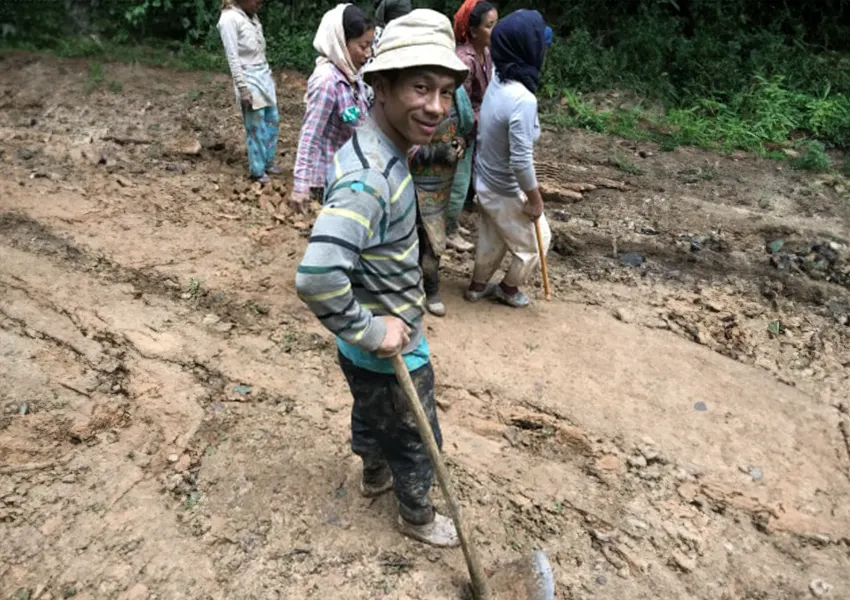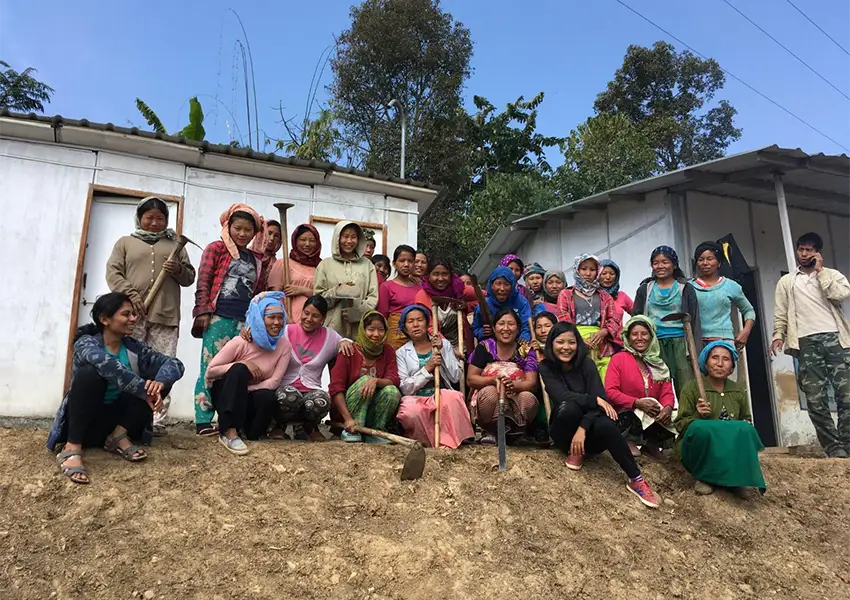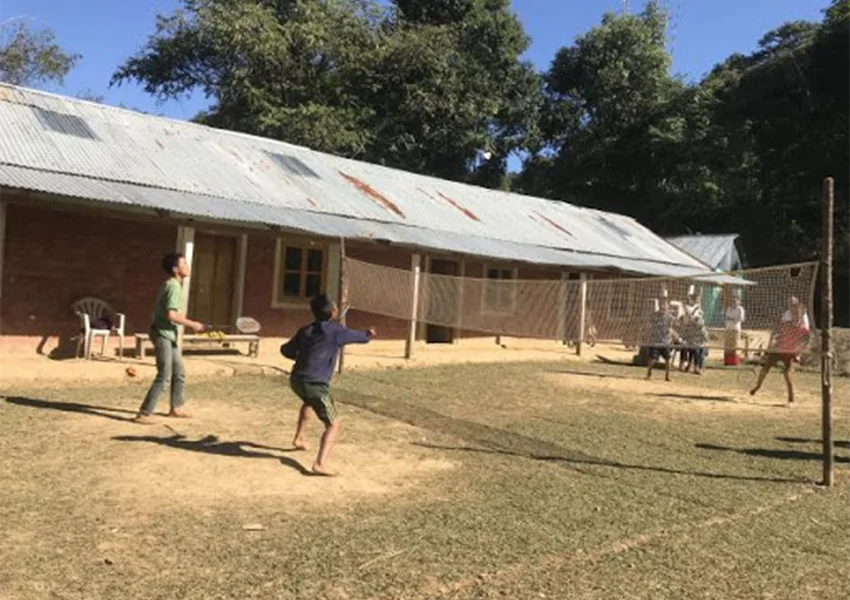Life in Papikrung has a charm of its own. We live amidst the mighty Himalayas on a mountain slope. Right out the door, across a deep valley, is a series of mountains peaking one above another, with snowy peaks calling from the distance (on a clear sky day). The air is as pure as it can get. The water is sourced right from the mountain streams, melting from the high glaciers and passing through forests sans any industrial contamination.
Poor connectivity
Dismal connectivity is a major hindrance for life and work. We cannot make phone calls to family when required. Relaying work-related information in a timely manner is also a challenge. The recently installed Airtel tower in the region has proved to be of some help. It can handle WhatsApp texts in the random and limited time windows during which Airtel services become selectively available on some phones. On the brighter side of things, however, even getting minimal connectivity is a major quantum leap. It signals that things will only improve moving forward. One can expect full-fledged telecommunication services in the near future, and that will be a critical development in the village. At present, however, the government-run Wi-Fi internet facility (VSAT) is at least 15 minutes away from the school, and worse the connectivity is patchy and slow.
Wild insects
For electricity, solar power is the only viable option at present. The Indian Army has graciously donated and installed solar panels that power the school premises. The day starts and ends early and our daily activities are usually regulated by daylight hours. While lack of sufficient electricity is a slight impediment to working well in the evenings, on the brighter and healthful side of things, we get to honour our circadian rhythm and get quality sleep in the night sans much light and noise pollution. Surrounded by dense mountainous forests, the nights get very cold and borderline unbearable in winters, and the lack of electricity to power heaters is felt bitingly; the alternative is the local hearth that burns firewood and keeps the indoors a little warm. Even water supply, surprisingly, is not a settled matter (yet). Though there are plenty mountain streams falling down the slopes into the river on the valley floor round the year, civic infrastructure in this remote region is found wanting. The piping system is poorly done in a rudimentary fashion, not entirely with galvanised iron pipes; mostly plastic pipes with many little makeshift bamboo connectors are used for water supply to homes. Besides the problem of multiple leakages, the lack of a well-designed filtration mechanism and a storage tank thwarts water supply to homes, with twigs and the like clogging the pipes. The result is that there is no water in the taps more often than not and one has to fetch water in buckets from a nearby location and use less water despite its abundance in the surroundings.
Living next to the wild has a peculiar problem. There are notorious tiny insects, likely little cousins of mosquitoes, which locals call ‘Dum-dum’, that cause terrible tiny blood-sucking bites and leave nasty bite marks and skin rashes. The itching induced by the rashes is irresistible and prolonged. Odomos or similar mosquito repellents have no apparent effect on them; only Dettol antiseptic liquid has a slight repelling effect. One is well advised to leave skin unexposed to the extent possible to be saved from these minuscule flying attackers. Also, living amidst rainforests, one has to be wary of snakes and take precautions against attracting them. Well-organised and minimalist living is helpful along with ensuring that there are no congested corners and that the surroundings are clear of weeds. Having encountered several snakes in under ten days of living here, it is necessary that we are alert and watchful of our step when outdoors and avoid heading out after dusk to stay safe from the nocturnal, likely venomous reptiles. If unavoidable, using a well-powered torch is a must as is tuning into our instincts and being focused and alert. Another must-carry item at all times is an umbrella and preferably a raincoat, given that this region consists evergreen rainforests, and even though the days can get sunny on non-cloudy days, the late evenings and nights are sure to surprise us with unanticipated intermittent showers, if not heavy rains, in the non-(rather less-)rainy season. The monsoon, anyway, is notorious for torrential, merciless downpours that tend to cause devastating landslides.
Road connectivity is decent but for stretches rendered non-motorable due to torrential downpour and occasional landslides. Road connectivity is being currently extended close to the (disputed) international border to facilitate better preparedness by the armed forces.
Wildlife
The indigenous semi-domesticated wild buffalo called Mithun are present in large numbers. They hold a special place in the region’s socio-cultural life. Regarded as a status symbol, they signal the wealth and prosperity of the household that owns them. The locals covet the mountain beast and want to rear as many as they can. Mithuns are left to roam freely in the forests for much of the day. There are also wild horses and plenty of mountain goats calling these forests home.
Terrain and hiking
With villages perched atop mountains and many more hills and mountains all around, for a trekking enthusiast, options abound in every direction. One can either scale hilltops and mountain peaks or descend down to the valley to see the rushing river. Requesting a local guide to show the way and share the stories and secrets of the place would surely yield a memorable experience.
Life here atop a mountain is devoid of the conveniences taken for granted in a city and to that extent is characterised by a certain discomfort; but for the adaptive ones among us it isn’t hard to adjust to the different reality. In compensation, there are the rewards of unique charms and benefits of staying amidst mountainous rainforests. Plus, the warmth and the overall cohesiveness shown by the villagers here makes our stay pleasant and conducive for work, play, study and general reading and writing.
